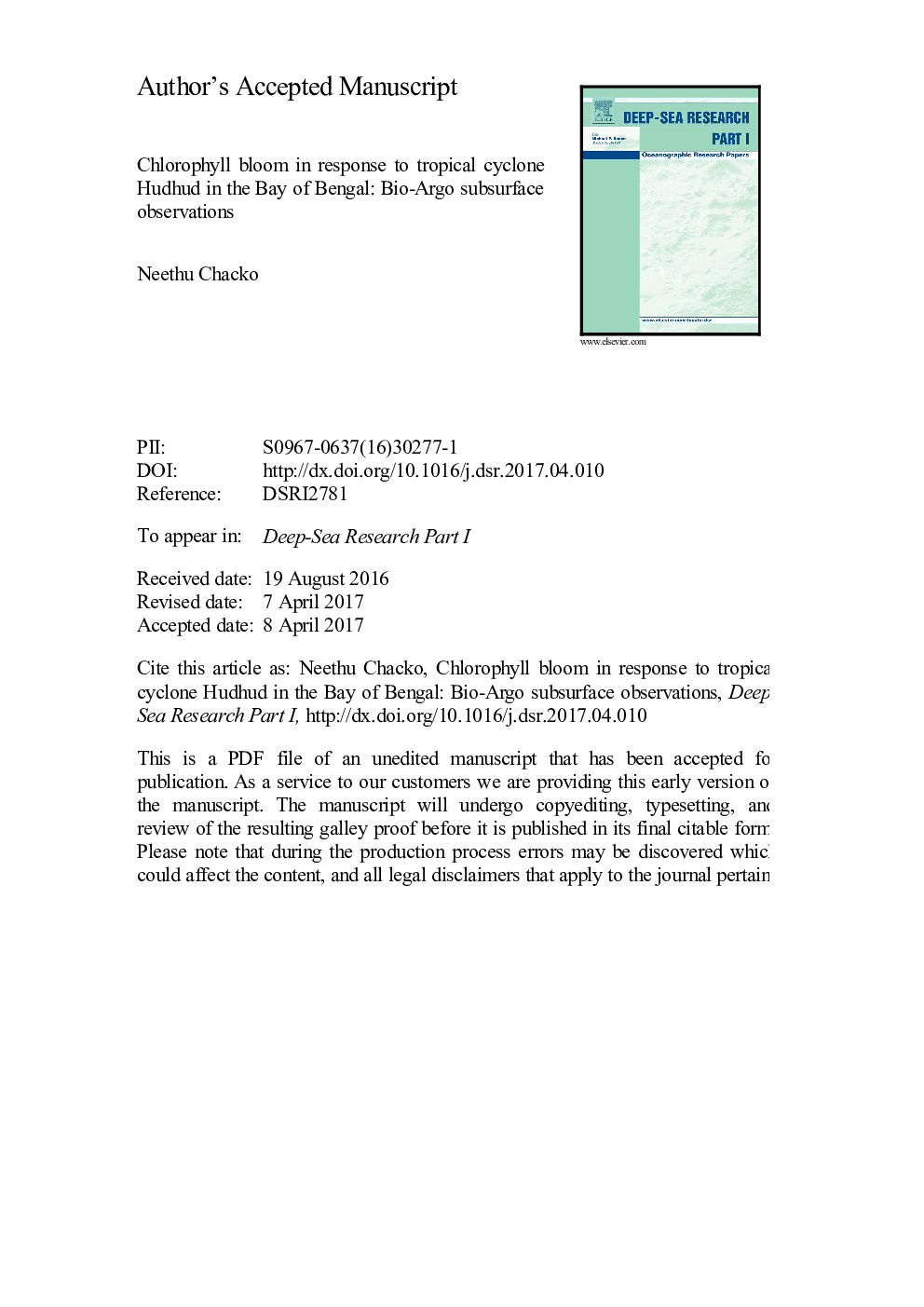| Article ID | Journal | Published Year | Pages | File Type |
|---|---|---|---|---|
| 5764697 | Deep Sea Research Part I: Oceanographic Research Papers | 2017 | 25 Pages |
Abstract
Though previous studies have documented substantial increases in chlorophyll concentrations as a result of cyclones, most of them were based on satellite observations dealing with surface chlorophyll blooms. This study documents the subsurface biological response and the subsequent chlorophyll bloom observed in response to the tropical cyclone Hudhud as evident from a Bio-Argo float located at the central Bay of Bengal. Results show high chlorophyll concentrations of up to 4.5 mg mâ3 which is anomalous in the normally warm, stratified, and oligotrophic Bay of Bengal. The chlorophyll bloom is attributed to the combined effect of subsurface chlorophyll entrainment and nutrient injection. The presence of a pre-existing cyclonic eddy and the decreased translation speed of the cyclone over this region could have played a role in inducing the biological response. This is the first ever report to document the evolution of a subsurface chlorophyll bloom in response to cyclone forcing using Bio-Argo observations.
Keywords
Related Topics
Physical Sciences and Engineering
Earth and Planetary Sciences
Geology
Authors
Neethu Chacko,
